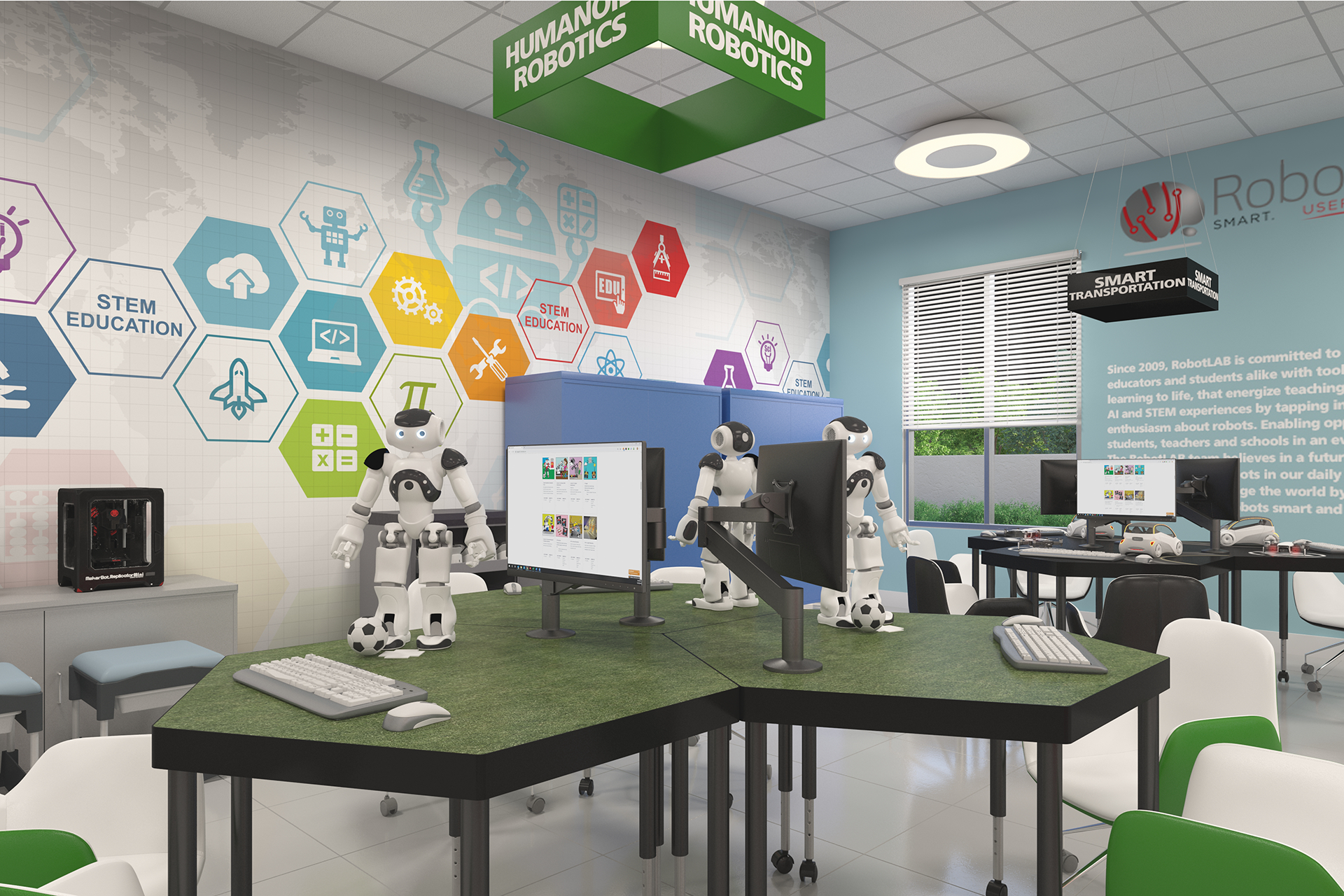By Ronald Chaulisán Battle
 Photo by Glenn Carstens-Peters on Unsplash
Photo by Glenn Carstens-Peters on Unsplash
Let’s reimagine hybrid learning and improve education outcomes for all students
By definition, the word hybrid means “composed of mixed parts.” Until now, that has meant two parts: in school – where we largely haven’t been since mid-March – and at home.
When COVID-19 hit, we shut the classroom door and jumped into virtual learning with virtually no planning. Planning includes, but is not limited to, physical preparation and measures, social adaptation, ensuring emotional well-being, reassessing traditional educational standards – seeing them through a new lens – and having flexible systems ready.
In spite of most parties’ best efforts, results were abysmal.
Now, with the nation’s fall and winter school plans often changing based on COVID metrics, we have the chance to add critical nuance and dimension to hybrid learning and set ourselves up for a higher level of success. The biggest mistake we can make is to replicate what we had done before – the physical school paradigm or the virtual experiment we were forced to construct this past spring.
There’s no denying that hybrid, or blended, learning will usher in the 2020-21 school year, and potentially stay for the foreseeable future. The good news is that we’ve learned a lot since March that we can put to good use.
Even more promising is that we are not locked into how we did things in the past, because the past is no longer an option. It is time to deliberately shape hybrid learning to maximize success for students, teachers, and families.
Here are three hybrid learning strategies to fuse into our planning:
1. There’s no “one size fits all” hybrid learning
Today’s education discussion focuses, understandably, on whether to physically go back to our school buildings and classrooms full-time, part time, or not at all. Safety comes first, but I suggest that we spend less time arguing about when kids should go to school and think harder about why kids and teachers need to be physically present in the school building. The answer ultimately lies in measuring student achievement, and understanding how it takes place within different settings, but for now, I suggest we base it on a logical examination of what works best in a number of physical environments and learning platforms.
The traditional classroom environment certainly provides advantages. It’s where educators can effectively teach new concepts, lead class discussions, coach individuals and small groups, and give real time feedback. Beyond academic measures, they can gauge and flag the socio-emotional wellbeing of a student who may be experiencing less than optimal conditions at home–even abuse. Schools also afford access to social workers, health professionals, and guidance counselors. Importantly, they feed our nation’s children. In 2018, schools served 29.7 million K-12 children with low-cost or free lunches.
While more challenging in many ways, online learning also lends itself to certain benefits and positive outcomes. Students with ample access to technology may learn faster online than in the classroom. Research shows that online learning requires 40-60 percent less time to learn than in a traditional classroom setting because students can move at their own pace. Note that this is strictly incumbent on all students and households having requisite technology and reliable, high-speed internet access, which is far from the case today–particularly in urban communities amongst students of color.
I cannot stress enough how this imperative must be addressed if we plan to give all students an equal chance. This calls for a long-term vision, public-private partnerships, and financial commitments, which will surely aid in our nation’s economic comeback.
Trying to replicate the old school model is a dead-end street, but trying to adapt successful online strategies in lieu of other activities, like personal enrichment, wellness and workout programs, and others can inform how we structure virtual learning for students, teachers, and families. There is a world of online success stories out there and we should be continuously sharing best practices. Just one example comes from Ann Arbor, Michigan, where the Childhood Disparities Research Laboratory at the University of Michigan created InPACT@Home, a fitness program that offers free, online workouts developed by phys ed teachers across the state for students. InPACT had been running in Michigan schools for several years, but when COVID struck, they decided to offer it inside students’ homes. In the coming months, the program seeks to reach 1.5 million school kids to help compensate for the ill affects of COVID-19.
2. Location, location, location
There’s no question that there’s a need for in-person instruction and interaction, but what if that didn’t have to happen at a school? Many overcrowded city schools, particularly older buildings, were never designed for social distancing, and simply may not be suitable for use at this time. What if we reimagined the school building as an entirely different building in the community? What if we “borrowed” real estate from other organizations and facilities that could served as part-time, part-usage substitutes for schools? While schools may be fully or partly off-limits for the foreseeable future, creative thinking can turn up other local real estate solutions. Public and private spaces like libraries, universities and community colleges, Boys & Girls Clubs, and others could be good settings for school activities that require social distancing but still allow students to come together. Students can gather for extracurricular activities and club activities, while being supervised for health and safety.
Schools have long served as wrap-around locations for before- and after-school activities, including childcare and sports activities. There is a dire need for subsidized quality childcare as the nation goes back to work, and schools that have provided that service may no longer be an option. This is a factor that cannot be ignored as we focus on new educational models. With less or no time in “real” school, who will keep our kids engaged and safe as parents go back to work?
These considerations force us to break the traditional school and school/online model and imagine new concepts. They give us the opportunity to start from scratch and look beyond the obvious to meet our students’, educators’, and families’ physical needs for education and many of the services that accompany it. They motivate us to explore community partnerships that can result in a win-win for both organizations with unused space on their hands and those with a need to house learning and child support services.
3. Remote learning has rich potential
Not to be confused with online or virtual learning, remote learning refers to the fact that the child is working from home. While most of that presumes online learning– dependent upon quality, reliable technology tools, and access– it also encompasses a different type of learning that centers on the family’s background and culture. There exists a largely untapped opportunity to use a child’s cultural background and heritage as a source for learning and family collaboration. The benefits are powerful if we approach this type of remote learning not as an “add on,” but as an integral part of the learning experience.
Schools and educational partners in the community should look to implement more culturally relevant curricula that leverage students’ rich ethnic backgrounds. This will engage the family in the learning process through writing and language exercises, special projects, and storytelling. This helps make the home learning environment less divisive and more collaborative, which benefits all. These alternative learning experiences can also give back to the community and benefit the social and emotional component of educating children. This is another example of imagining a different set of learning experiences versus simply trying to replicate what we have done in the past.
Make a new hybrid learning model the goal, for all the right reasons
As we enter a historic new school year, we owe it to our students to think big and think far ahead as we create new education strategies.
At the most basic level, we should design return-to-school-building plans around activities that require students and adults to be in the building and physically present for each other, rather than just having the goal of a full return to school buildings. Online learning was foisted upon us. Let us examine it now, not as a last resort, but as a viable option for certain forms of instruction and learning. We should tap into the countless examples of successful online learning models and use them to inform smart, data-driven online learning strategies.
Let’s remember that learning from home does not mean just working at a computer or other device, it can and should mean working with other family members to bring to life rich cultural experiences that can spark learning. Most of all, let’s make sure that every student and every household in this country has the same technological advantages – hardware and reliable high-speed Internet access – as every other.
Let’s be smart about the decisions we make. Let’s think critically about what we need to accomplish. Let’s design to meet goals. Let’s perpetually measure and examine data. Let’s not just replicate what we did before.
Discover more learning Resources with RobotLAB!



